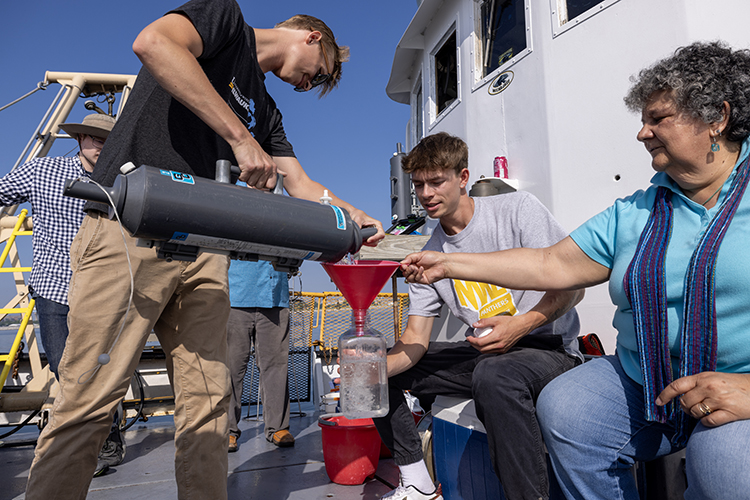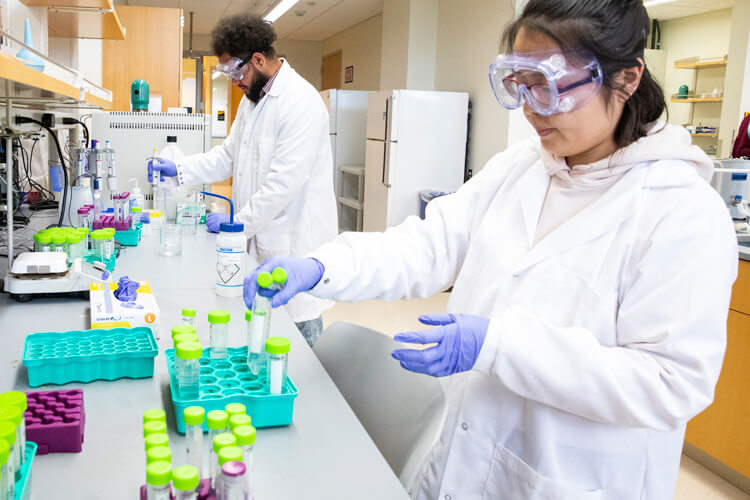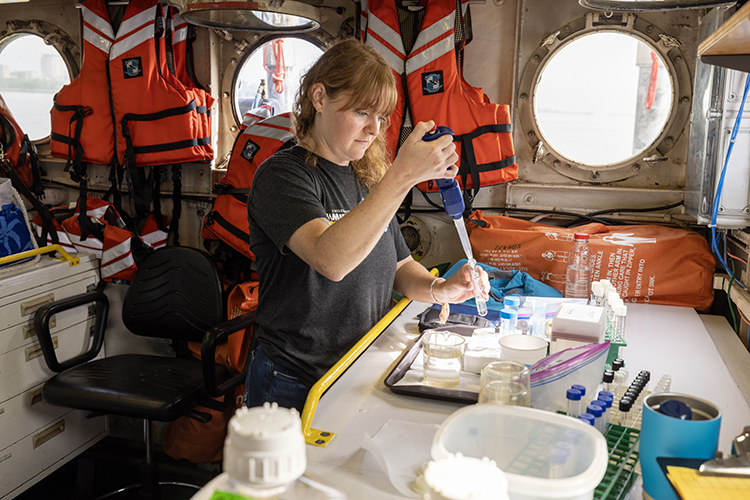Fleet and Facilities
For more than 50 years, we’ve maintained the largest academic research institute on the Great Lakes.
Our location in Milwaukee’s Inner Harbor offers the ideal location and resources to study the largest freshwater ecosystem in the world. Our aquaculture center features aquaculture and aquaponics teaching labs to train the nation’s next generation of sustainable fish farmers. And our marine operations building houses our extensive research fleet.
Request Vessel Use
The R/V Neeskay is available to scientists and researchers wishing to study Lake Michigan.
Fleet Research Vessels
When it’s time to explore Lake Michigan and inland waters, students, faculty and scientists have a range of tools from which to choose, including our primary research vessel, the R/V Neeskay, and numerous small watercraft and remotely operated underwater vehicles.
In addition, we are raising funds to construct the most advanced vessel ever built for the Great Lakes. When completed, the R/V Maggi Sue will be the most technologically advanced research vessel on the Great Lakes.


Facilities, Equipment and Labs
Our research building houses state-of-the-art facilities, including biosecure and quarantine labs for studying aquatic species; a pathogen testing facility; the scenic Harborview Conference Room; an instrument shop where tools are custom-made; and multiple research centers. The School of Freshwater Sciences also operates three seasonal environmental monitoring buoys in Lake Michigan as part of the Great Lakes Observing System.
Partnering on Lake Michigan
We share our research facilities with several on-site collaborators. The fisheries division of the Wisconsin Department of Natural Resources works side by side with our faculty to preserve and manage fish populations in the Great Lakes. The United States Department of Agriculture houses a unit of its Agricultural Research Service in the Great Lakes Aquaculture Center, helping us to develop cutting-edge fish farming technologies.
The Lake Guardian, part of the U.S. Environmental Protection Agency fleet and the largest research vessel on the Great Lakes, uses our facility as its home port. Additionally, the administrative offices of the Southeast Wisconsin Watershed Trust and Milwaukee Riverkeeper are co-located at the school, and a Wisconsin Sea Grant economist has an office in the building.

